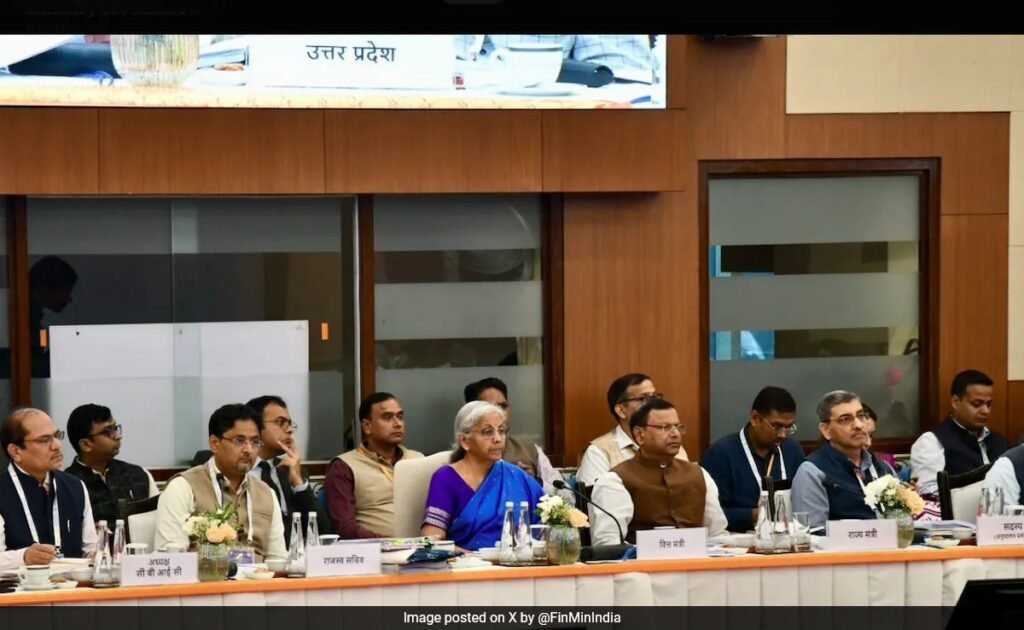
The complicated GST slabs that gave headaches to small traders after the flagship tax overhaul came into effect in 2017, was cleaned up by the government today, leaving only two slabs — 5 and 18 per cent. The new structure will be implemented from September 22. For the common man, it means more money hand. This, the government hopes, will be routed into the economy, giving it a significant boost and having a revenue implication of Rs 48,000 crore.
“These reforms have a multi-sectoral and multi-thematic focus, aimed at ensuring ease of living for all citizens and ease of doing business for all,” Union Finance Minister Nirmala Sitharaman said after a meeting of the GST Council.
Hon’ble Prime Minister Shri @narendramodi announced the Next-Generation GST Reforms in his Independence Day address from the ramparts of Red Fort.
Working on the same principle, the GST Council has approved significant reforms today.
These reforms have a multi-sectoral and… pic.twitter.com/NzvvVScKCF
— Nirmala Sitharaman Office (@nsitharamanoffc) September 3, 2025
The Cheap, Expensive and Super Expensive
Individual life and health insurance policies, including family floater, and some medicines including anti-cancer drugs, will no longer be taxed. A massive chunk of medical items of regular use — including thermometer and glucometer — will be in the 5 per cent tax bracket.
Aspirational items like television, air conditioners and motor bikes under 350 cc will come under the 18 per cent slab. But it would still be cheaper, with the earlier tax slab being 28 per cent.
Small cars — petrol vehicles up to 1200 cc and diesel vehicles up to 1500 cc — will also be in the 18 per cent tax bracket. The rest will draw a tax of 28 per cent.
There will also be a sin tax of 40 per cent that would apply to tobacco and tobacco related products, carbonated beverages, mid size and large cars and bikes above 350cc,
The rest of items — especially daily essentials, like hair oil, shampoo, soap and other toiletries, dairy products and snacks will also be in the 5 per cent bracket.
Relief has been given to the farmer with agricultural implements coming down from 12 per cent to five per cent. Education has also been made more affordable with the tax on exercise books, note books, pencils, erasers and crayons coming down from 12 to 5 per cent.
High Praise From PM Modi
In a post on X, Prime Minister Narendra Modi said, “During my Independence Day Speech, I had spoken about our intention to bring the Next-Generation reforms in GST. The Union Government had prepared a detailed proposal for broad-based GST rate rationalisation and process reforms, aimed at ease of living for the common man and strengthening the economy. Glad to state that @GST_Council
, comprising the Union and the States, has collectively agreed to the proposals submitted by the Union Government on GST rate cuts & reforms, which will benefit the common man, farmers, MSMEs, middle-class, women and youth”.
“The wide ranging reforms will improve lives of our citizens and ensure ease of doing business for all, especially small traders and businesses,” he added.
During my Independence Day Speech, I had spoken about our intention to bring the Next-Generation reforms in GST.
The Union Government had prepared a detailed proposal for broad-based GST rate rationalisation and process reforms, aimed at ease of living for the common man and…
— Narendra Modi (@narendramodi) September 3, 2025
The Current System And Why It Had To Change
The ongoing system has four slabs – 5, 12, 18, and 28 per cent.
But the GST council found that the tax collected from the 18 per cent slab over the last eight years accounted for over two-thirds of the total GST revenue — around 67 per cent.
The 12 per cent slab generated the lowest, an estimated five per cent of the inflow in the same period. The five and 28 per cent slabs yielded seven and 11 per cent, respectively. So it was decided to drop the two slabs – the 12 per cent because the revenue yield is insignificant and the 28 per cent because it was expected to prompt manufacturers to cut prices of luxury goods.
The 5 and the 18 per cent categories contributed a whopping 74 per cent of revenue from GST, which totalled Rs 11.37 lakh crore in 2020/21, sources said.